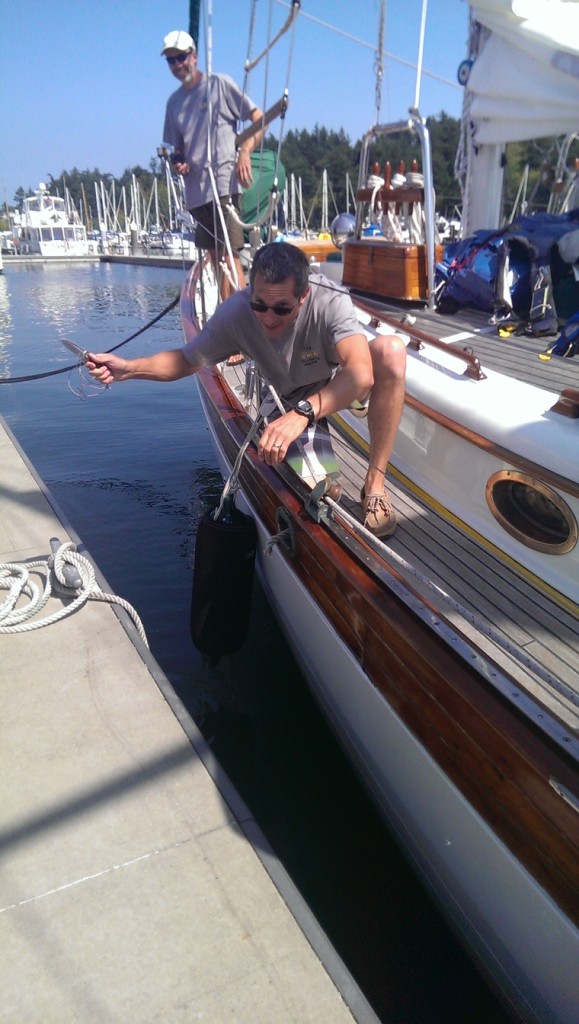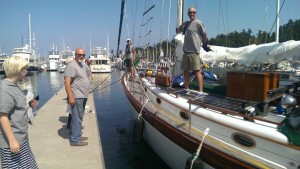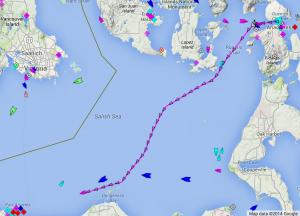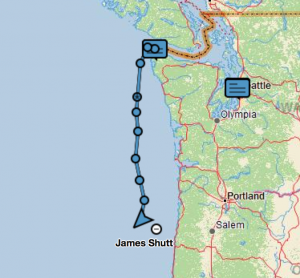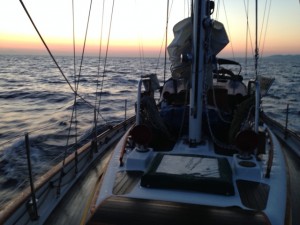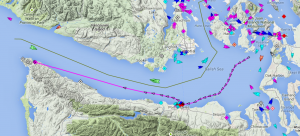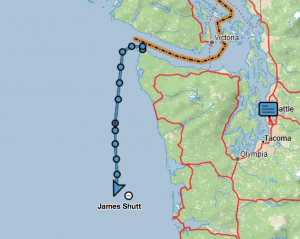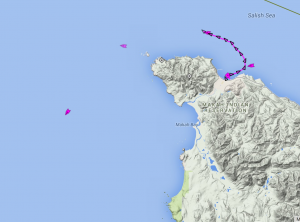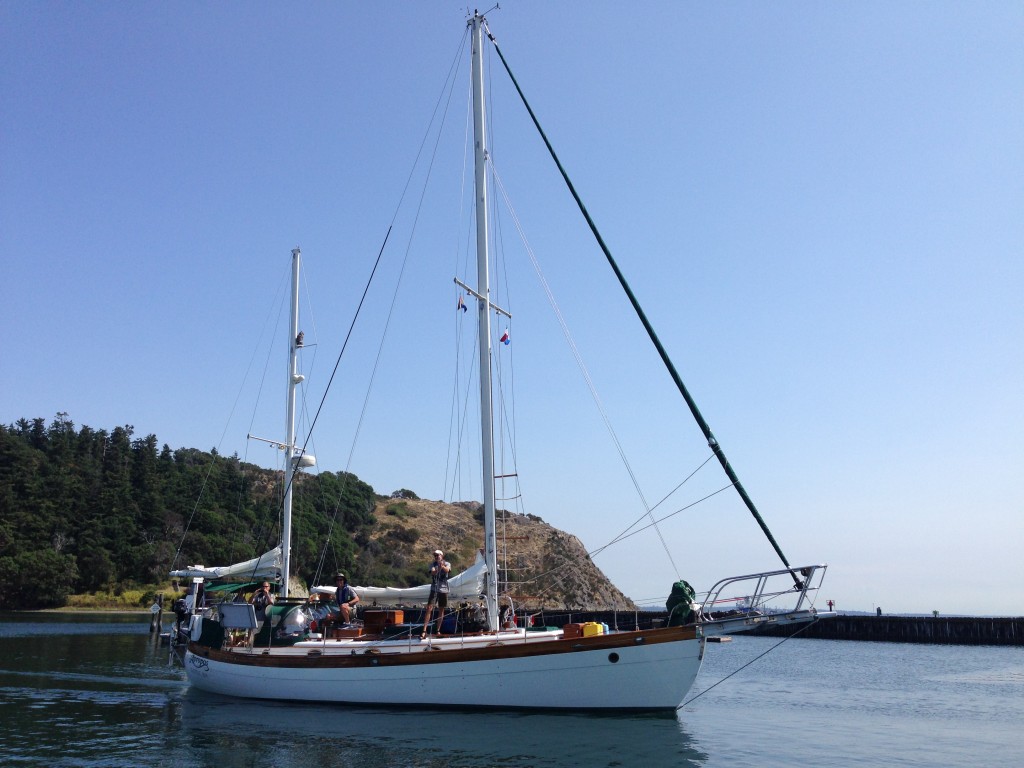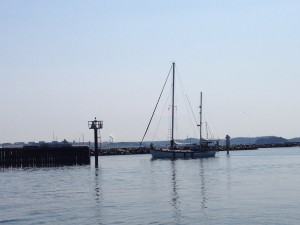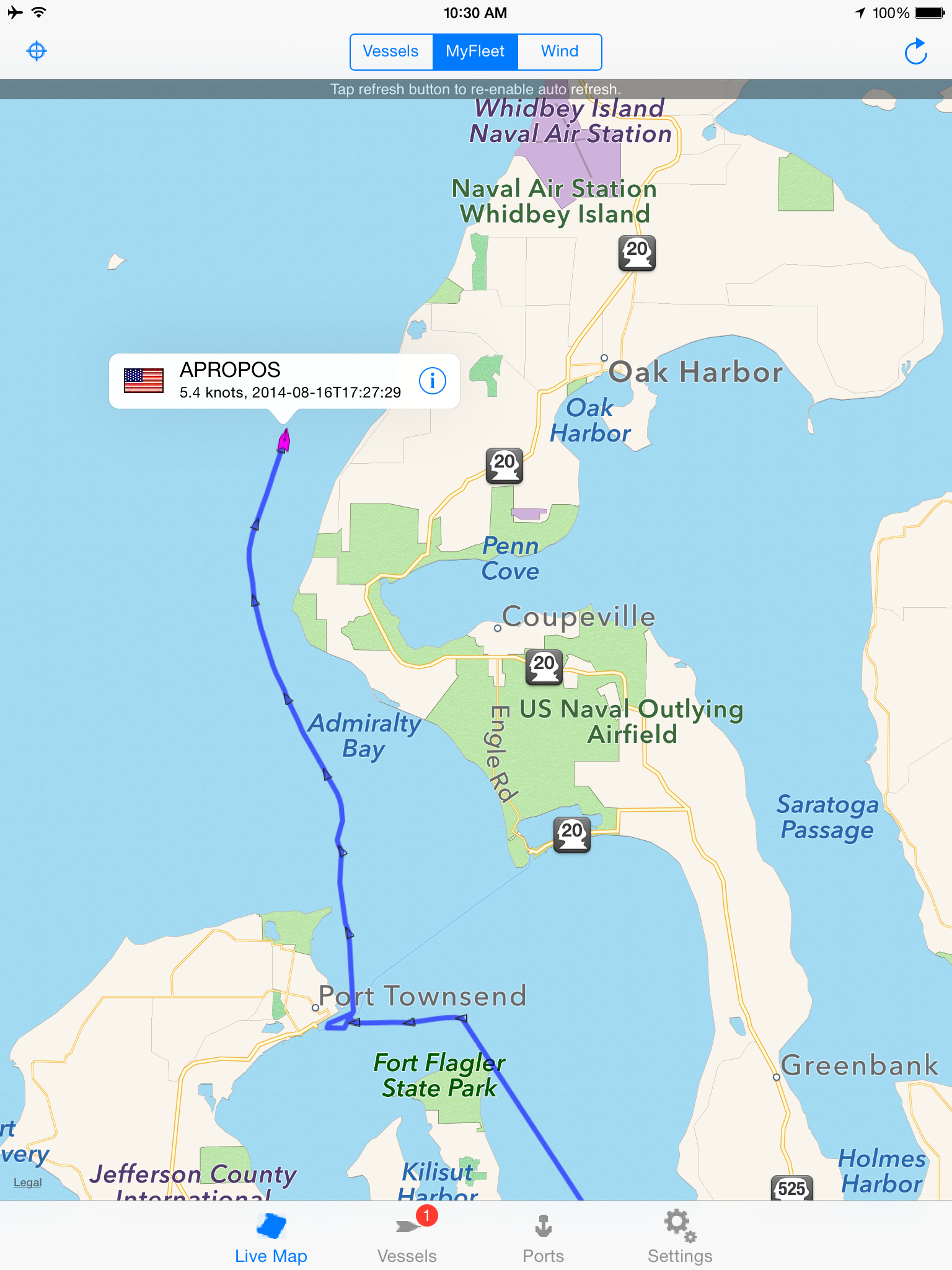> [pin 4320] > Yesterday we caught a 12 lb Tuna about 40 miles off the coast of northern Oregon. We trailed a hand line about 20′ off the stern and were motoring at the time at 6 knts. An hour later we were eating fresh tuna steaks cooked in coconut oil with rice wine vinegar, saki, garlic, sesame seed oil, and olive oil.
Coos Bay Stopover
We had some fuel issues that changed our plans today. We decided to pull into Coos Bay to fuel up. Motoring there now and should arrive around 11pm.
Fuel issue–no winds 55 miles off so we’ve been motoring all day. Around mid-day the engine started sputtering and a quick inspection showed the port side tank nearly empty and a clogged Racor diesel filter. I changed a valve position that corrected the problem and now both tanks are even again. We decided to pull in as a precaution, so nothing critical. We will fuel up in the morning and get back on track.
Other–had some dolphins swimming in our wake http://youtu.be/Qkz_Fhi4Lcc. Chef Risto is cooking up another fabulous dinner using the remaining tuna (they wouldn’t let me fish today!).
Somewhere off the Oregan Coast 08/21/2014
A self-steering windvane is a mechanical device that steers the boat on a course with respect to the wind. Our windvane is an older Fleming model so we named him Ian (James Bond)! We haven’t engaged Ian lately, maybe we will try later today if the wind picks up.
When the tuna hit, I pulled in the handline, Risto netted it, and Mike clubbed it on the head a few times, then Risto finished it off and Scott retrieved the fishing gear. Was difficult bringing it aboard with a short-handled net. With all the clubbing just outside the cockpit in the gunwale, blood splattered on cockpit cushion, dodger, me, and Risto. We got the washdown pump going and cleaned it all up. The cleaning tray came in handy for filleting the fish on a rocking boat.
Sailing update–After motoring all day yesterday, we raised the mizzen and genoa at around dark and used them most of the night sailing at 5 knots. Just as my watch started at 4am the wind dipped to 5 knts so we are now motoring. Yesterday the engine started revving down so I looked at the Racor filters and one was very clogged. So I changed it and cleaned out the bowl. There was also about 3 oz of water in it. I may have taken on bad fuel at Neah Bay, or the tank still had some junk in it even after they were cleaned before leaving Seattle. Anyhow, I’m keeping an eye on the filter.
Current position is about 50 miles off of Newport, OR. At least 2 other boats that are part of the Coho Ho Ho rally are pulling into Newport today. We see lots of fishing boats out here and an occasional freighter. We contacted one on VHF around 1am and they responded right away saying they saw us. The closest we generally come to another boat is 5nm.
Cap’n Jim
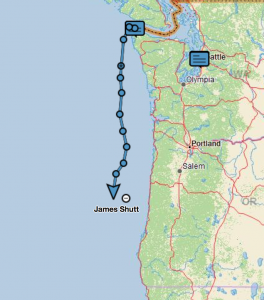
Fish On!
We’re currently off the Oregon (northern) coast. Fun night last night for our first over-nighter–plenty of wind and swell. Sailed throughout the night with single reefed main, partially furled genoa, and single reefed mizzen. Morning brought lighter winds so we’ve been motoring most of the day. Our shift schedule is working well. All in all we’re making good progress each day. I just put a hand line out so will see if we catch our dinner!
Right after writing the above and before sending, Mike at the helm yells FISH ON! We pulled in a nice 12 lb Tuna. Risto and I cleaned the meat off and Scott and Risto are cooking away right now. So…. fresh Tuna for dinner!!
-Cap’n
Day 4 Port Angeles to Neah Bay
Almost at state border
Anacortes to Port Angeles
This is a test mail to see if I can update the blog via SSB radio.
Our trip from Anacortes to Port Angeles went well. After motoring a few hours, the wind picked up and we crossed the Strait of Juan de Fuca under sail. Apropos was well balanced with the Genoa, Main, and Mizzen out. We tried out the windvane (mechanical autopilot)with much success! It’s an older Fleming model but very well built. We decided to name him Ian (Ian Fleming–bond 007). So Ian steered us on course for a few hours close-hauled in 10 knt winds. Pulled into Port Angeles after dark around 10pm after motoring the final 2 hours into a headwind–very bouncy. Decided not to take a chance on snagging a log with anchoring and pulled into the dock. Up today at 4am and left by 4:20am to catch a nice ebb tide and currently 11nm west of PA motoring at 6knt with a beautiful sunrise. Should reach Neah Bay mid afternoon.
Rounding the Corner of Washington State
Day 3 – Anacortes to Port Angeles
It was a morning of frenzied activity after the Pirate Party at Anacortes Marina last night. Despite that Jacintha managed to set up her art and tattoo stall. Unfortunately all the pirates were on their boats nursing their sore heads from too much grog the night before . So business was sloooow.
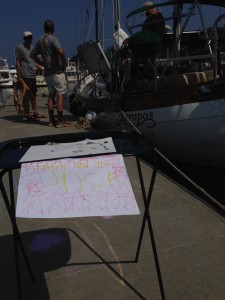
The men were busy readying the boat for the noon departure. Last minute things were stowed away, some things were taken off the boat and the solar panels and jack lines installed.
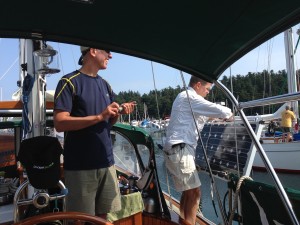
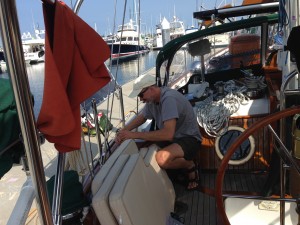
Then it was time to have a photo and a boatside toast to Neptune/Poseidon…..
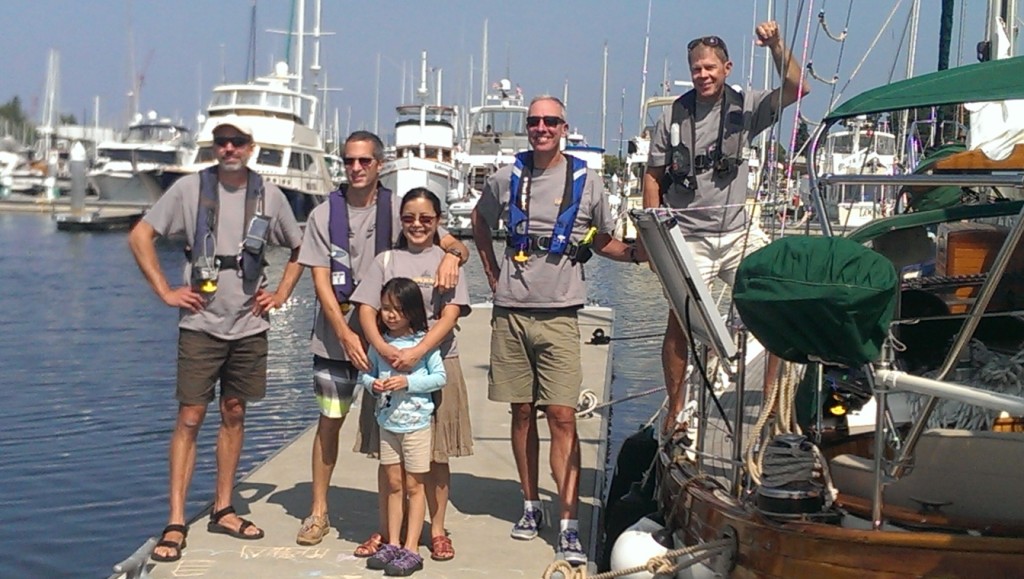
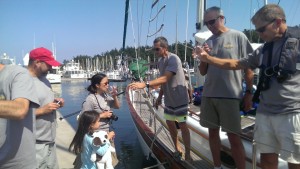
…then it was finally time for Jim to cut the lines to the dock! And off they went!
